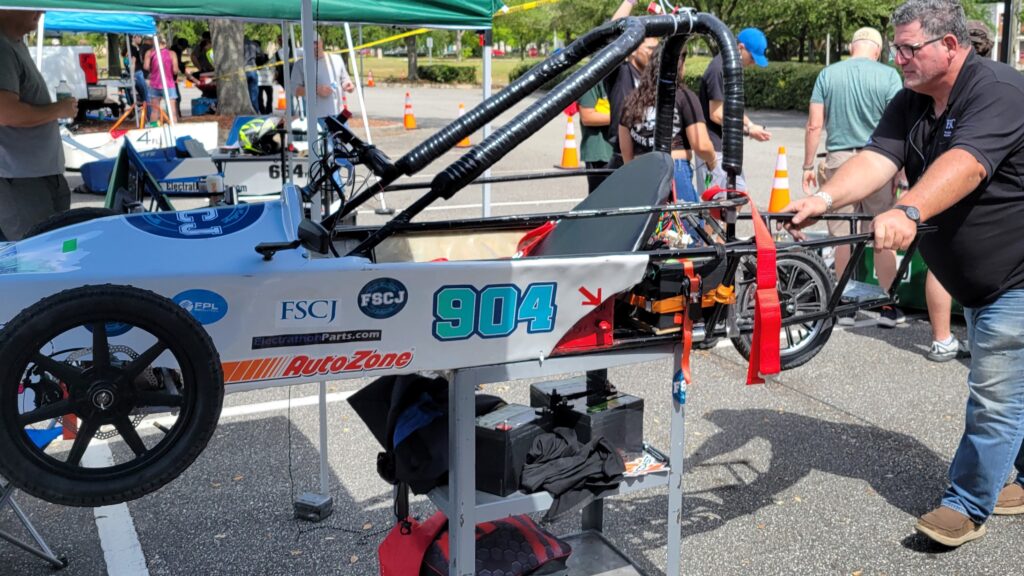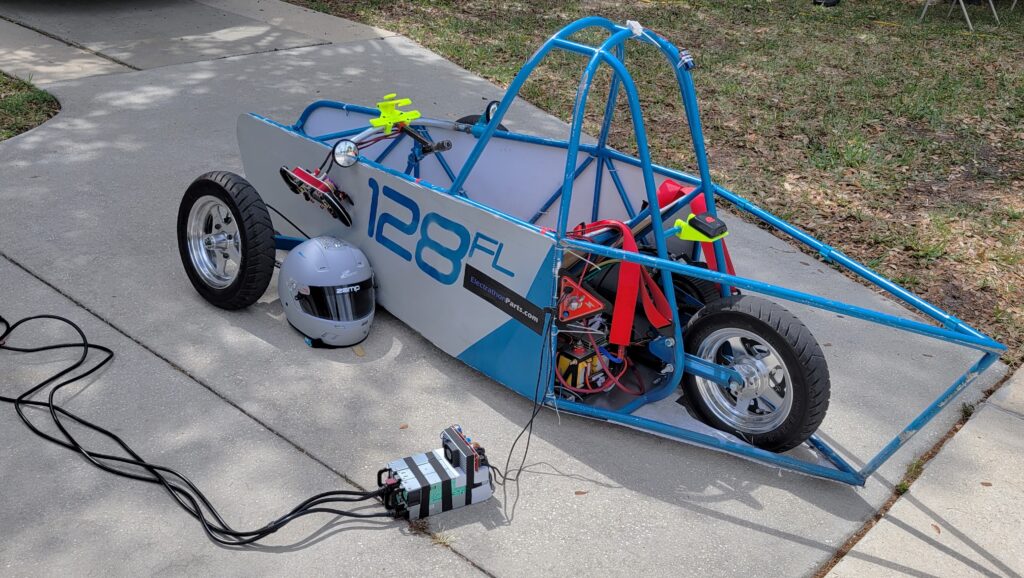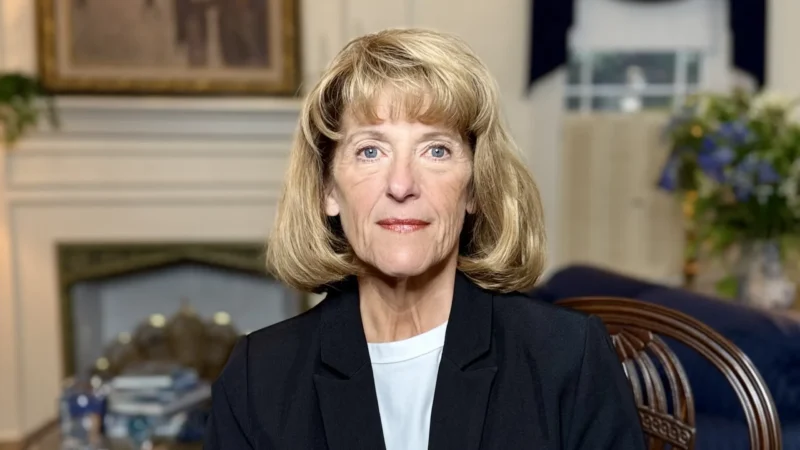Zane Kays’ battery-powered race car was on the back part of a curvy course at Florida State College at Jacksonville when all forward motion stopped with a bang.
The racer’s rear wheel sheared off at the hub, losing its drive from the electric motor, resulting in a ride back to the pits on the back of an all-terrain-vehicle.
For the 20-year-old student in the college’s automotive technology program, competing in these lightweight electric race cars is a step toward his dream of working on full-size EVs at some place like a Porsche dealership. But racing for a win against other slim, lightweight racers in the Electrathon series while conserving battery power can come to a grinding halt as well.

“Look at that — clean break,” Kays said after holding the wheel and hub of the stricken No. 904 in his hands.
“I really enjoy driving it,” he said. “Building it is fun. But driving it — there is kind of an adrenaline going, competing with other people out there on the course. There’s a sense of competition, and you have cars that are like falling apart or breaking, and randomly die. There so many factors that keep the race interesting.”
This season includes 12 Electrathon of Florida races around the state. The cars built by high school and college students have to last for two hours, said Robert Wechsler, professor in the Automotive Technology department at FSCJ.
FSCJ offers multiple automotive courses, from service management to collision technology, as well as working with the JEA to test autonomous vehicles at its Cecil Center campus. The JTA also operates its first autonomous shuttle at FSCJ’s Downtown campus, running from the Advanced Technology Center, president’s office and cafeteria for students, faculty and visitors.
The Electrathon America racing series started in 1980 in California as a fun way to educate students about electric cars through hands-on design, fabrication and competition. The knee-high race cars are fairly quick for their size. An Electrathon America vehicle was clocked at 62.1mph on a straightaway, organizers said.

So an obvious outgrowth of the college’s automotive program is to build the lightweight race cars for Electrathon competition, said Robert Wechsler, professor in the Automotive Technology Department at FSCJ.
Some serious skill level was evident in many of Saturday’s cars from high schools as well as colleges, from wooden bodies to sleeker designs done in metal or plastic.
“It’s a competition because you get an hour to run around the track, and the guy with the most laps wins. Usually we give trophies for first, second and third place,” he said. “Its all about the gearing, and there’s a lot of things — ergonomics and chemistry — there’s a lot of different STEM (science, technology, engineering and mathematics) subjects in this racing stuff. That’s why we get involved in it, because it is really teacher-friendly.”
Wechsler said the competition helps train the students for the burgeoning electric vehicle market, which Kays agrees with. Co-driving FSCJ’s EV race car is fun, but he is learning driving skills, plus mechanical and teamwork abilities for his future automotive career. With more and more automakers designing and selling electric cars and trucks, that is where he would like to work after graduation, he said.
“It’s not just EV particularly, but it is the fact that we build this car from the ground up, then compete against other people who have built it from the ground up,” he said. “Some of us might be a bit disappointed in (modern cars) becoming electric, but it is the inevitable case, so I plan on taking the EV class here and taking my knowledge there.”

Eleven Electrathon race cars came from all over the state Saturday to FSCJ’s Downtown campus, some with an electric motor powering a single front or rear wheel. Drivers sit low, surrounded by a roll cage, some with slick aerodynamic bodywork. The race cars can weigh no more than about 160 pounds, including two lead-acid or lithium-Ion batteries.
The goal is not speed, but outright distance, going as far as they can on a charge. Saturday’s racing included two, hour-long races, split by a two-hour period for maintenance. Drivers must pace themselves so they get the most efficiency and distance in each race.
FSCJ came in third on Saturday, despite the broken wheel, with Bree Donatiello driving the second race.
The second-to-last season race will be May 11 at Mulberry High School, followed by the finals in June at Homestead Speedway, sponsored by FP&L.







